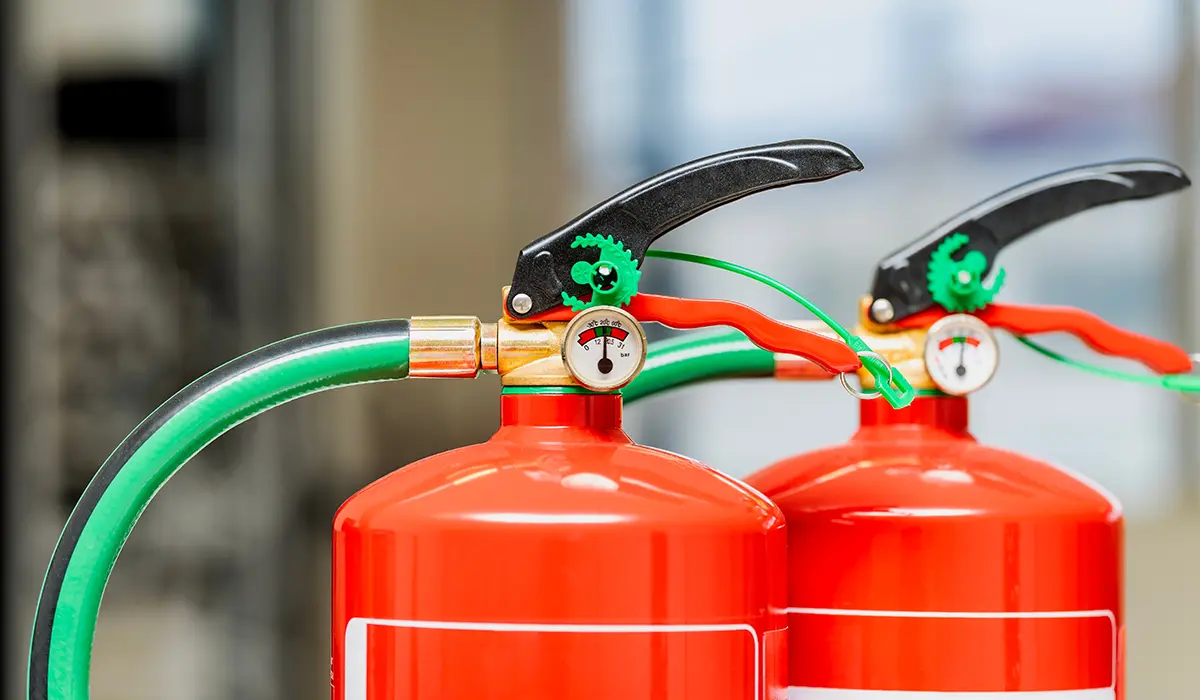Fire Extinguisher Compliance for London Offices: What You Need to Know
Fire extinguisher compliance for London offices isn’t just a good practice — it’s a legal requirement. Fire extinguishers play a key role in first response to fires, but just having them installed isn’t enough. They must be properly maintained, placed, and serviced in line with UK fire safety laws.
Below, we break down everything London office managers, business owners, and landlords need to know to stay compliant and protected.
Why Fire Extinguisher Compliance Matters
Under the Regulatory Reform (Fire Safety) Order 2005, the “Responsible Person” must ensure the safety of all occupants. Failure to comply can result in:
- Fines up to £5,000 for minor breaches
- Unlimited fines or imprisonment for serious non-compliance
- Void insurance claims if extinguishers are missing or not maintained
Legal Requirements for London Offices
Minimum Equipment Standards
- At least two Class A extinguishers per floor
- CO₂ extinguishers for areas with electrical equipment
- Extinguishers must be visible, accessible, and correctly signed
Installation Rules
- Mounted on brackets or stands
- Maximum 30m travel distance from any point to an extinguisher
- Clear labelling and instructions
Annual Servicing
- Must be done at least once per year
- Performed by a competent fire safety professional
- Must be logged in your Fire Log Book
Types of Fire Extinguishers You Might Need
| Extinguisher Type | Suitable For | Common in Offices? |
|---|---|---|
| Water | Paper, wood, fabrics (Class A) | Yes |
| Foam | Class A + flammable liquids | Yes |
| CO₂ | Electrical fires (Class B & E) | Yes |
| Dry Powder | Multi-class fires, outdoor use | Sometimes |
| Wet Chemical | Cooking oils/fats (Class F) | Not common |
Who’s Responsible?
The “Responsible Person” is legally accountable for fire safety and compliance. This could be:
- The employer or business owner
- A building manager or landlord
- A designated fire safety officer or fire marshal
They are responsible for:
- Installation & maintenance of extinguishers
- Organising fire safety training
- Keeping updated fire risk assessments
Fire Risk Assessments: Your Starting Point
A proper fire risk assessment is required before installing extinguishers. It should be:
- Carried out regularly and reviewed annually
- Performed by a competent person
- Documented if your business has 5+ staff
This will determine what types of extinguishers you need, how many, and where they should be placed.
What Happens During Servicing?
- Visual inspection for damage or tampering
- Pressure and weight checks
- Safety seals and pin verification
- Recharging or replacing if necessary
- Record updates in your Fire Log Book
Staff Training: More Than a Box-Tick
Your staff should know:
- Classes of fires and which extinguishers to use
- The PASS technique: Pull, Aim, Squeeze, Sweep
- When to use an extinguisher — and when to evacuate
Training can be in-person or online. Fire marshals should receive advanced training and refreshers over time.
Stay Compliant Year-Round: Office Checklist
- Annual servicing by a certified professional
- Updated fire risk assessment
- Staff trained on extinguisher use
- Fire Log Book up to date
- Extinguishers accessible & correctly placed
Final Thoughts
Fire extinguisher compliance isn’t just about ticking boxes — it’s about protecting lives and your business. Regular maintenance, clear responsibility, and well-trained staff ensure that your office stays safe and legally compliant year-round.
For more information on Fire Extinguisher Compliance for London Offices contact Total Safe UK.

